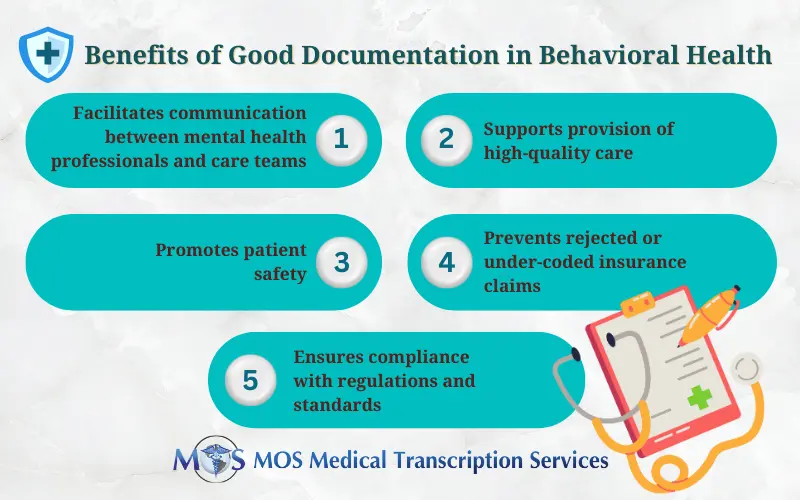
Table of Contents
Around one in five American adults experience some type of mental health condition in any given year, according to the National Institute of Mental Health. Since the beginning of the COVID-19 pandemic, spending on mental health services by individuals with private health insurance surged, according to a study published by the JAMA Health Forum in 2023. To deliver high-quality care, providers need to maintain meticulous and up-to-date clinical documentation that meets industry standards. Complete and detailed documentation is crucial for demonstrating medical necessity and also the foundation for coding, billing and quality of care. As behavioral health specialists focus on their patients, relying on a specialized medical transcription company can ensure accurate charting.
Trends in Mental Health Illness Prevalence and Service Use
Use of behavioral medicine services has increased along with prevalence of ‘any mental illness’ (AMI) and ‘serious mental illness’ (SMI). Here’s what reports say:
According to the National Institute of Health
- Use of mental health services increased by 39 percent from March 2020 to August 2022.
- Prevalence of AMI was higher among females (27.2%) than males (18.1%).
- Prevalence of AMI was highest among young adults aged 18-25 years (33.7%) compared to adults aged 26-49 years (28.1%) and aged 50 and older (15.0%).
- In 2021, SMI affected an estimated 14.1 million adults aged 18 or older (5.5% of all adults).
- In 2021, among the 57.8 million adults with AMI, 26.5 million (47.2%) received mental health services in the past year.
A study that examined trends in mental health services after the start of the pandemic reported that there was a 22 percent increase in use of mental health services during the acute phase of the pandemic (March 2020 to December 2020). The study results were published in RAND in August 2023.
The study examined conditions such as anxiety disorders, major depressive disorder, bipolar disorder, schizophrenia, and PTSD. Researchers found that in-person mental health services declined by 40 percent while tele–mental health services increased 10-fold as compared to the previous year.
“The demand for mental health services further underscores the critical need to integrate behavioral health services into primary care,” noted study coauthor Dena Bravata. “Through this integration we can address the growing issues around lack of access, affordability, and stigma, while providing a more comprehensive, person-centered approach to overall health.”
Ensure Comprehensive and Precise Documentation
Your practice should maintain detailed and precise documentation of all encounters with patients. Make sure to document medical necessity showing the reason for medical services provided. From the time you start seeing a patient you must document different types of records, including:
Intake and Assessment
Comprehensive documentation is necessary to substantiate the diagnosis. The documentation should be based on a detailed diagnostic/clinical evaluation. It should include historic information and diagnostic interview, and/or psychiatric assessment. Alternative diagnoses or explanations should be ruled out.
The intake and assessment section should cover:
- Presenting problems
- Mental health status and history
- Previous treatments
- Current providers
- Relevant demographic information
- Medications
- Substance use information
- Physical/mental health conditions
The evaluation should have a detailed description of the patient’s current medications, treatments and assistive devices and technologies as well as history of medication side effects that have affected them.
Treatment Plan
In the treatment plan for each patient, make sure to include their current diagnosis, goals and objectives, interventions and options, modality and frequency of treatment, and methods for tracking and measuring progress.
Ongoing Care
A patient may require a referral or needs to transfer to another provider for some reason. Clearly documenting referral or transfer, along with the informed consent discussion, is important to ensure the patient understands the reasons for the change and their rights are protected. If the potential benefits and risks of the new behavioral health program or service were discussed, this should be documented.
Transferring Care
Accurate progress notes support proper billing, reimbursement, and overall care. These notes can also be used by other providers involved in the patient’s treatment. These notes should include demographic information, subjective and objective descriptions of client behavior, their symptoms, a summary of their diagnosis, what the client discussed in each session, your professional opinion, a treatment plan, and referrals if necessary. Be sure to record details such as:
- The basis for the referral or transfer
- The specific provider or program the patient is being referred to
- The important points covered in the informed consent conversation
- The patient’s agreement to go ahead with the referral/transfer
Discharge Summary
When care is completed, document a discharge summary. This form, signed by both you and your patient, should include their diagnosis at discharge, detailed reasons for the discharge, progress toward treatment goals, potential risk factors at the time of discharge, and referrals or resources that could benefit the client.
Best Practices for Clinical Documentation

Keep these points in mind when documenting patient care:
- Use progress notes, treatment plans, and other documentation to improve care standards and reflect progress
- Ensure consistency in notes consistent clinical information and create a comprehensive story of the client’s progress
- Keep clinical notes confidential
- Include the date and time in the documentation.
- If corrections are made, state the reason for the correction and make the changes on all paper or electronic records.
- Avoid using vague language and documenting subjective information
Outsourced mental health transcription services are a viable strategy for improving note-taking. Experienced transcriptionists can ensure structured clinical documentation that meets the necessary standards. Once the transcription is complete, they will carefully review the documentation to ensure there no mistakes. They can provide HIPAA-compliant SOAP, DAP, EMDR, intake notes, etc., that are accurate, complete, legible, and organized. When you partner with a reliable service provider you can spend less time worrying about documentation requirements and focus on spending more time with your patients.


